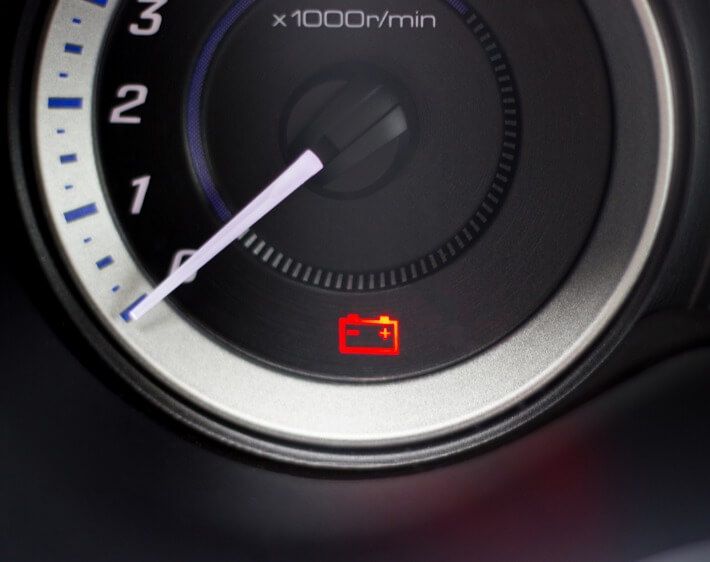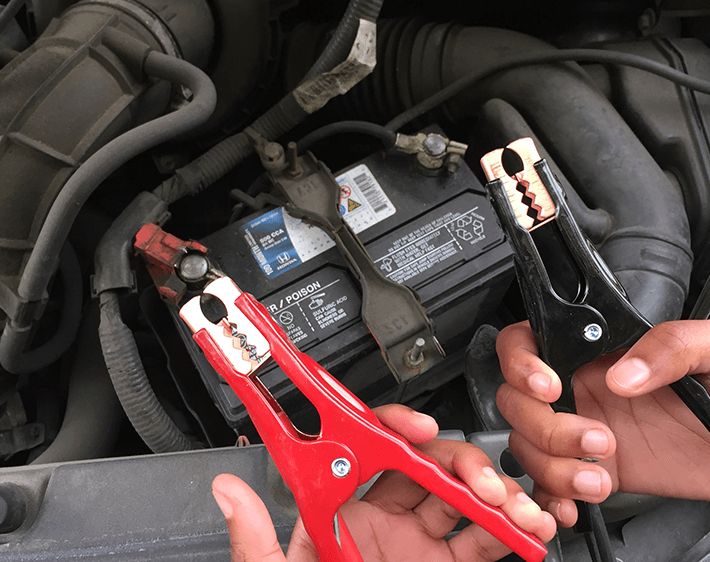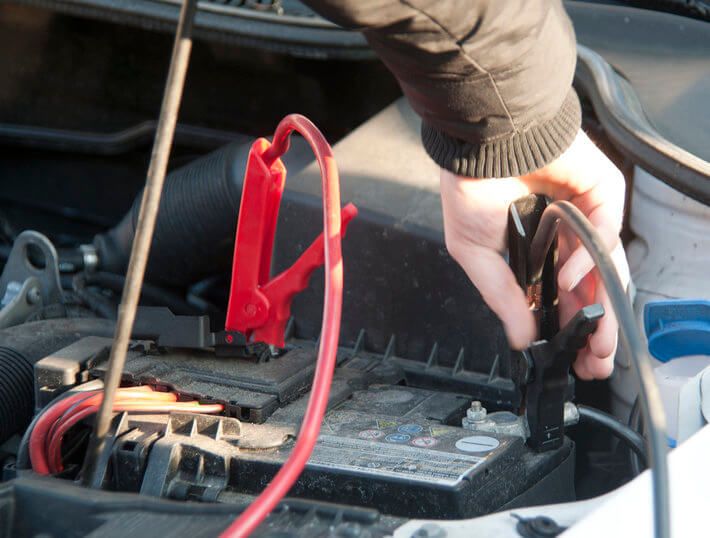How often do you think about your car battery? If you’re like most people, the answer is “never”—until there’s an issue with it. A dashboard car battery light could signal various issues under the hood, from a glitch in the alternator to a damaged battery.
But before you break out the jumper cables or stress about possible repairs, learn potential reasons why your dashboard battery light is on. It might be a quick fix!
What Does The Battery Light Mean?
If your car battery light comes on when you start the car and then turns off shortly after, you're in the clear! It’s completely normal for this light to illuminate when you first start your car. The light should turn off after a few seconds.
If the light stays on as you’re driving, though, pay attention. You'll likely notice other signs of a weak battery charge, like sluggish power windows or a stereo that won't turn on. An illuminated battery light could be due to a number of issues, including:
1. Alternator or Voltage Regulator Problem
The alternator charges the battery and powers the electrical system when the engine is running. If the alternator or the voltage regulator, which controls the alternator’s output, is faulty, the battery light may come on.
Signs of a failing alternator include dimming headlights, electrical issues, and a dead battery. Without a functioning alternator, your car will rely solely on the battery, which is unsustainable for long drives.
2. Loose or Corroded Battery Cable
Battery cables can become loose or corroded over time, disrupting the flow of electricity. When this happens, the battery might not receive the charge it needs from the alternator. Corrosion, often visible as a white or bluish powder on the terminals, can prevent proper electrical connection. Tightening and cleaning the cables can often resolve this issue.
3. Old, Discharged, or Weak Battery
Car batteries typically last between three to five years, though this timeframe can vary depending on usage, climate, and brand. As batteries age, they lose their ability to hold a charge efficiently. If your battery is old, discharged, or weak, it might not provide the necessary voltage to the electrical system, causing the battery light to turn on. A damaged battery might still start the car but can struggle to maintain the necessary voltage. If your battery is more than three years old, it's worth having it tested.
4. Faulty Wiring in the Car's Electric Charging System
Faulty or damaged wires can prevent the alternator from charging the battery properly. Diagnosing wiring issues can be complex and might require professional assistance, but addressing these problems is crucial for maintaining your vehicle’s electrical health.
A dashboard battery light basically means there's a problem with the battery or charging system. Your car isn't getting enough voltage from the car battery to operate properly. It needs more "juice!"
Can You Drive Your Car With The Battery Light On?
While an illuminated battery light may not initially prevent your vehicle from driving, commuting with the battery light on is not advisable. Here's why:
- Loss of power: The battery light indicates a problem with the battery or charging system. If the alternator is not charging the battery, the car will eventually run out of electrical power. This can lead to the vehicle stalling and can cause a breakdown.
- Damage to other components: Ignoring the battery light can result in more severe damage. A failing alternator, for instance, can cause other electrical components to malfunction, leading to costly repairs.
- Safety concerns: Safety is a crucial factor. A car that stalls unexpectedly can be dangerous, especially at high speeds or in heavy traffic. Addressing the battery light promptly ensures your vehicle remains reliable and safe to drive.
Troubleshooting Your Battery Light
Now let's talk about your car battery light! It could mean it's time to replace the battery. But, the light could also be triggered by a minor (and easily fixable) issue like corrosion or loose clamps. So put on some protective gloves, consult your owner's manual, and then carefully follow the steps below to troubleshoot the battery yourself.
Check for corrosion.
In some vehicles, fumes from regular operation can cause corrosion to accumulate on top of the battery terminals, especially during summer months or in regions with year-round warm weather.
To check for corrosion, remove any covers from the terminals on top of your battery. If you see a white or greenish substance on the top of the battery or around the terminals, you've got corrosion! While this is common, it can interfere with the conduction of electricity from the battery to the rest of your car.
Don't touch battery corrosion with your bare hands, as it could cause skin irritation. Instead, head to our next troubleshooting tip.
Clean the battery terminals.
If you notice significant corrosion or other grime around your battery terminals, this could be why your car battery light is on. Fortunately, it’s easy and inexpensive to clean your battery terminals with common household items and a bit of elbow grease. Simply remove the terminal covers, disconnect the battery cables, and give the terminals a hearty scrub.
Note: Always consult your vehicle’s owner’s manual for specific cautions before disconnecting the battery. Disconnecting the battery without a memory saver could cause issues like locking the radio or loss of the navigation system.
Tighten the cable clamps.
Sometimes a car battery light comes on because there's a weak connection between your battery and the cables that connect to it. While you have the hood open, check to ensure the clamps are securely fastened to your battery terminals. If you notice that the clamps are loose, use a small wrench or a pair of pliers to tighten them until they’re snug around the terminals. Consult your owner's manual for specific instructions related to your vehicle make/model.
What To Do When Your Car Battery Light is (Still) On
You've checked for and cleaned off any corrosion, and you've tightened up any loose battery cables. But your battery light is still on?! The culprit could be a mechanical issue, like a problem with the alternator or voltage regulator. Or, it could be something systematic, like faulty wiring.
Head to Firestone Complete Auto Care for a fast and free battery check. We’ll examine your battery’s health and recommend repairs or a new battery if necessary. Don’t get stranded because of battery issues! Find your nearest Firestone Complete Auto Care today and recharge your peace of mind.


